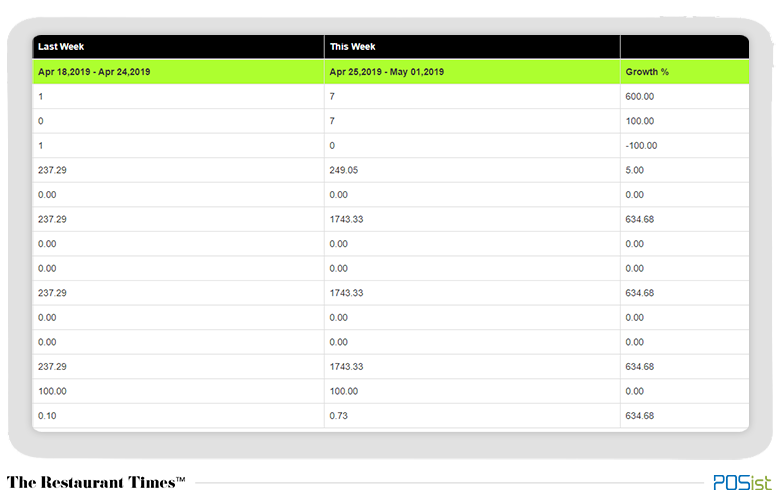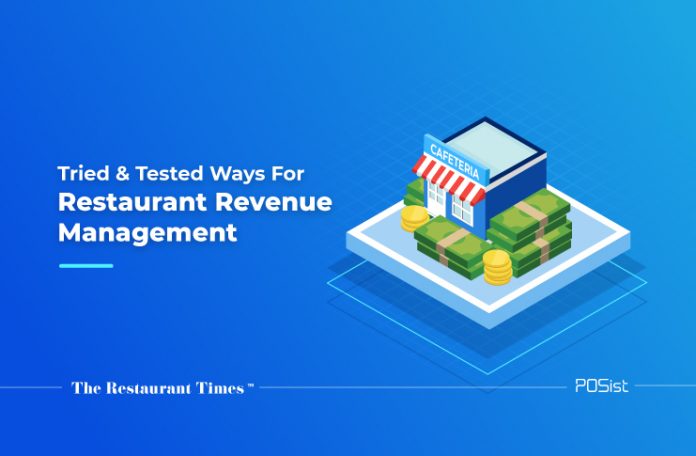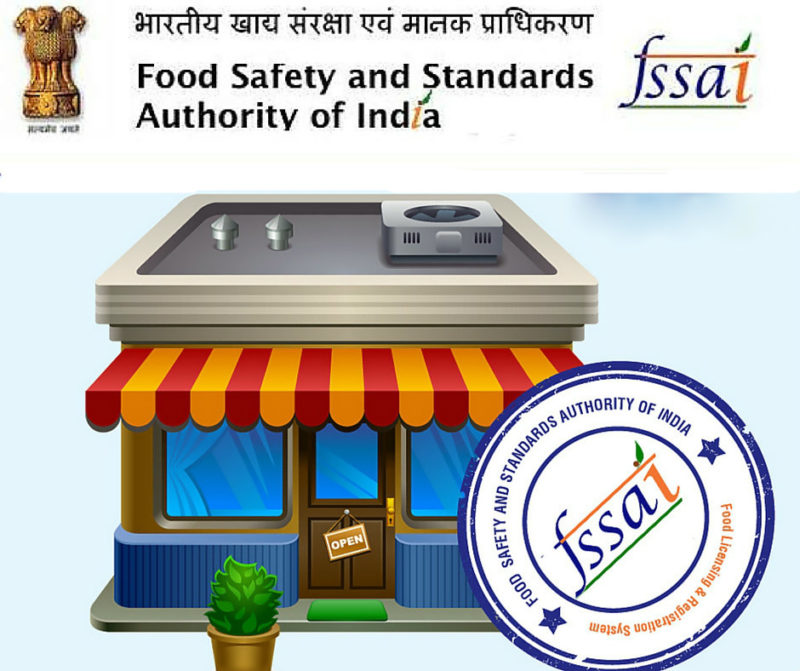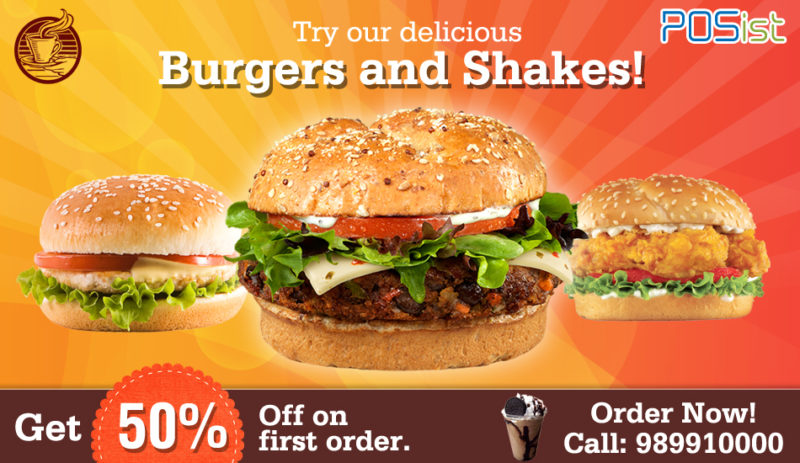Restaurant revenue management is using your fixed and perishable resources by charging different prices for the same services at different times. The difference could be because of higher demand, low sales, and so on. The most important thing to be noted here is the integration of data. Without data, be it from the customers’ end or your restaurant, it will be tough for you to analyze your cash inflows and outflows.
Some constraints that might come in your way while thinking of revenue management in the restaurant sector is the limitation of space and uncertainty in the service duration. Unlike the hotel industry, where the service time is almost always fixed in terms of check-in and check out, as a restaurant owner, you can never estimate the time a customer would take to finish his/her meal.
These factors may hinder the targeted table turnover rate, and thereby your entire revenue management plan. Nevertheless, we have made you a comprehensive program that you can follow to ensure that your overall revenue is in order.
What Is Included In Restaurant Revenue Management?
Before digging into the plan, you must understand the driving factors of your revenue management.
Managing revenue for your restaurant is a broad term that refers to efficiently using the limited resources at your restaurant, with an essential goal of maximizing restaurant profits. Extending your operation hours, training your staff to upsell orders, offering special discounts on low business days, additional food services and adding seats at your restaurant are all ways of managing revenue for your restaurant.
Restaurant revenue management generally includes segmenting your customers, managing the capacities of your restaurant, setting the right prices, and managing inventories all together to maximize the restaurant profits.
Restaurant Revenue Management- Things To Include In Your Plan
One thing you need to understand about revenue management is that it’s applicable for restaurants that have a higher demand than what they can accommodate during their peak times. For instance, if a restaurant has long queues of people waiting outside for a Friday dinner, the restaurant needs to manage its resources so that its ability to cater to more people at the same time.
Revenue Management generally includes these broader arenas:
1. Capacity Management
When we talk about capacity, we don’t mean the physical space of a restaurant. Instead, we expect the highest quantity of output possible in a given period, with constant support from your staff and resources.
Capacity management is not an issue for all restaurant formats. For instance, take away restaurants that only market themselves to increase the sales of their products, and not the overall footfall, do not need to worry about managing their space.
Here are some tips you can use to manage your restaurant’s capacity at any given point in time:
- Try changing your table layout to cater to more customers. This doesn’t necessarily include getting more number of tables, but managing your tables efficiently.
- During peak hours, incorporate your technology to take orders while your customers are waiting for their tables. This way, you would be able to serve them faster and thereby improve your revenue.
- Extend your operation hours, or open a delivery window to increase your generated revenue.
2. Time Management
The critical factor for better revenue management is the time your customer spends at your restaurant. We don’t mean that you should be in a hurry to serve your customers, but you must also take note of the time they are spending occupying the tables. After all, since time is money, you need to be able to politely prevent your customers from lingering on in your restaurant after their meals.
Furthermore, you must also ensure that your service and delivery time is optimized. A lot of restaurateurs rely on technology solutions like automated POS systems to achieve the same. When orders placed by the customers are directly pushed to your kitchen, it saves time for your restaurant to serve them and thereby enhances your revenue.
On a similar note, Animesh Lodha, founder of Cheelizza, says “Delivery orders are pushed directly to the POS. There is no need to punch orders separately. It, therefore, saves time and increases efficiency.”
3. Menu Management
Understanding that not all menu items would work the same in all seasons of the year is the first step. The next thing to realize about menu items is the difference between your food costs. Typically, if your food costs are beyond 25-30%, you might be selling a high-cost menu. In that scenario, it’s always recommended that you analyze your menu items, and categorize them under Stars, Plow Horses, Puzzlers and Dogs. This categorization will help you decide on your food costs better.
Apart from that, you must always be on a constant lookout for upcoming trends.
Once you’ve understood the basics of your menu, you can have a separate menu for your peak hours, for dull days and so on. This way, you would be able to provide different discounts during peak hours and sell your bestsellers to varying prices at different times. You can also automate the process using your restaurant management software. All you need is your customer data, based on which you can run multiple campaigns for different days and trends.
4. Price Management
Setting the right prices for your products at the right time is a crucial step in revenue management. Unlike more stable industries, like the airlines and hotel industry, where rates are hugely dependent on demand and availability, you can’t afford to increase your costs excessively at your restaurant.
This is why you need to pick up different practices to manage your pricing.
- Encourage customers to have meals on slow days by offering them midweek discounts or offers.
- Try incentivizing your staff to retain them. This saves majorly on your hiring costs.
Many restaurateurs also believe that getting reports in real-time helped them make better decisions on managing their restaurant revenue.
“Time-wise data, when are we coming, what are the peak hours for your restaurant and how do they vary for each of your outlets. I get daily payment reports in real-time, and that helps us minimize negative feedback from diners. Monthly, we do a sales mix and menu mix and understand why one item is working in one outlet and what’s not through these integrated reports,” adds Mithra.
5. Customer Management
As a restaurateur, you should understand that managing a decent relationship with your customer is a critical factor for your restaurant growth. You always need to be better than your existing competitors in terms of food quality, service and much more to be able to sustain longer. According to the NRAI FoodServices Report 2019, 23% of customers come back to the same restaurant because of the quality of food and the services provided.
There are multiple ways you can manage your customer to generate higher revenue.
- Number one, and the golden rule for all restaurant formats, is getting the right feedback. An efficient feedback system works wonders for your brand.
- Run multiple loyalty programs for your customers and make them excited about using the application.
- Your customer service needs to be on point. Since your front line staff becomes the face of your brand, ensure that they undergo extensive training to achieve your desired goals.
- Use customer data to understand your customers better. Your restaurant POS will be able to help your staff while upselling a particular order since you have all your customers’ previous orders at one place.
- Talk to your customers! Sometimes, the presence of your restaurant manager on the floor enhances your brand image, and thereby boosts sales!
The Need For Integrated Data
Like mentioned earlier, the basic need to manage revenue for any restaurant is data! Without data, you have a vague plan with no specificities. While handling your restaurant operation, you must have understood that you need a regular analysis of your business to make better financial decisions. Through an integrated reporting system, you get multiple reports on one platform. Here is an example of one such revenue report for your analysis.

Having such comprehensive reports in real-time helps boost your business growth. Therefore, restaurateurs must understand the importance of accurate data.
All in all, your restaurant revenue management plan would have some constraints and limitations since the service time is not always constant. However, by making a few adjustments like changing your table layout to fit more customers, or taking advance orders while your customers are waiting for their tables, or making customers shift to a smaller meal if they are comfortable would help you manage your sales and revenue, better. Apart from these practices, you must also analyze your restaurant’s performance in terms of daily sales made, the net profits, the menu items that work and the ones that don’t, and so on.

















